Donald Judd: Untitled: 1970
In this video, Flavin Judd, the artist’s son and artistic director of Judd Foundation, discusses a historic large-scale work by his father from 1970, ahead of its presentation at Art Basel Unlimited 2024.
I have transformed myself into the zero of form and dragged myself out of the rubbish-filled pool of Academic Art. I have destroyed the ring of the horizon and escaped from the circle of things, from the horizon-ring which confines the artist and the forms of nature.
—Kazimir Malevich
It’s obvious now that the forms and colors in the paintings that Malevich began painting in 1915 are the first instances of form and color.
—Donald Judd
Gagosian is pleased to present the exhibition Malevich and the American Legacy at 980 Madison Avenue, New York.
The exhibition has been conceived in close collaboration with the heirs of Kazimir Malevich and features six rare and pivotal paintings, including Painterly Realism of a Football Player—Color Masses in the 4th Dimension (1915), which was recently acquired from the heirs of Malevich by the Art Institute of Chicago. These are brought together with works by modern and contemporary American artists including Carl Andre, John Baldessari, Alexander Calder, Dan Flavin, Donald Judd, Ellsworth Kelly, Agnes Martin, Barnett Newman, Ad Reinhardt, Ed Ruscha, Robert Ryman, Richard Serra, Frank Stella, James Turrell, and Cy Twombly. Major institutions—including the Museum of Modern Art, New York; Nasher Sculpture Center, Dallas; and Storm King Art Center, New Windsor, New York—have loaned works to the show; other works have been borrowed from the personal collections of Twombly, Kelly, and Ruscha.
In the ferment of the early twentieth-century Russian art scene, Malevich, one of the pioneers of nonobjective art, developed Suprematism as an art of pure form. He envisioned his Suprematist paintings as geometry stripped of any attachment to the mimetic representation of real objects—the elemental alphabet of a pictorial language outside the visual world. Suprematism thus conveyed what Malevich believed was the supreme reality of existence: pure feeling. His works were first shown in the West in 1927, when he traveled to Germany with over seventy works of art, which were included in the Große Berliner Kunstausstellung (Great Berlin Art Exhibition). Subsequently, Alfred H. Barr, Jr., included several paintings in the groundbreaking exhibition Cubism and Abstract Art at the Museum of Modern Art in New York in 1936. In 1939, the Museum of Non-Objective Painting opened in New York, whose founder, Solomon R. Guggenheim—an early and passionate collector of the Russian avant-garde—was inspired by the same aesthetic ideals and spiritual quest that exemplified Malevich’s art.
In this video, Flavin Judd, the artist’s son and artistic director of Judd Foundation, discusses a historic large-scale work by his father from 1970, ahead of its presentation at Art Basel Unlimited 2024.

The Winter 2022 issue of Gagosian Quarterly is now available, featuring Anna Weyant’s Two Eileens (2022) on its cover.
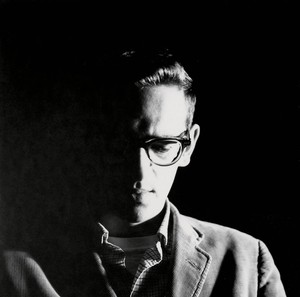
The definitive monograph on the work of Walter De Maria was published earlier this fall. To celebrate this momentous occasion, Elizabeth Childress and Michael Childress of the Walter De Maria Archive talk to Gagosian senior director Kara Vander Weg about the origins of the publication and the revelations brought to light in its creation.
Violinist Alina Ibragimova performs Bach’s Sonata for Solo Violin No. 1 in G Major: Adagio (BWV 1001, c. 1720) from within Richard Serra’s sculpture Transmitter (2020) at Gagosian, Le Bourget. Organized by Bold Tendencies, a nonprofit organization that commissions artists to produce site-specific projects and present performances, in collaboration with Gagosian, this recorded performance took place on May 8, 2022 before a live concert of Olivier Messiaen’s Quatuor pour la fin du temps (Quartet for the End of Time, 1941).
Cellist Mario Brunello performs Bach’s Cello Suite No. 1 in G Major: Prelude (BWV 1007, c. 1717–23) within Richard Serra’s sculpture Transmitter (2020) at Gagosian, Le Bourget. Organized by Bold Tendencies—a nonprofit that commissions artists to produce site-specific projects and present performances—in collaboration with Gagosian, this recorded performance took place on May 8, 2022, before a live concert of Olivier Messiaen’s Quatuor pour la fin du temps (Quartet for the End of Time, 1941).

The Fall 2022 issue of Gagosian Quarterly is now available, featuring Jordan Wolfson’s House with Face (2017) on its cover.

Eleonora Di Erasmo, cocurator of Un/veiled: Cy Twombly, Music, Inspirations, a program of concerts, video screenings, and works by Cy Twombly at the Fondazione Nicola Del Roscio, Rome, reflects on the resonances and networks of inspiration between the artist and music. The program was the result of an extensive three-year study, done at the behest of Nicola Del Roscio in the Rome and Gaeta offices of the Cy Twombly Foundation, intended to collect, document, and preserve compositions by musicians around the world who have been inspired by Twombly’s work, or to establish an artistic dialogue with them.

Gillian Pistell writes on the loaded symbol of the American flag in the work of postwar and contemporary artists.

In this second installment of a two-part essay, Julian Rose continues his exploration of Donald Judd’s engagement with architecture. Here, he examines the artist’s proposals for projects in Bregenz, Austria, and in Basel, arguing that Judd’s approach to shaping space provides a model for contemporary architectural production.
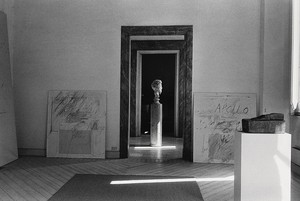
In 2020, the Museum of Fine Arts, Boston, announced their plan for a survey of Cy Twombly’s artwork alongside selections from their permanent ancient Greek and Roman collection. The survey was postponed due to the lockdowns necessitated by the coronavirus pandemic, but was revived in 2022 with a presentation at the J. Paul Getty Museum in Los Angeles from August 2 through October 30. In 2023, the exhibition will arrive at the Museum of Fine Arts, Boston. The curator for the exhibition, Christine Kondoleon, and Kate Nesin, author of Cy Twombly’s Things (2014) and advisor for the show, speak with Gagosian director Mark Francis about the origin of the exhibition and the aesthetic and poetic resonances that give the show its title: Making Past Present.
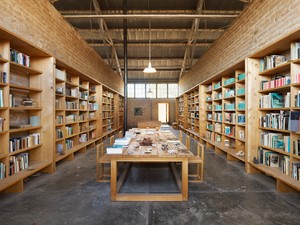
Richard Shiff speaks with Caitlin Murray, director of archives and programs at Judd Foundation, about the archive of Donald Judd, how to approach materials that occupy the gray area between document and art, and some of the considerations unique to stewarding an archive housed within and adjacent to spaces conceived by the artist.
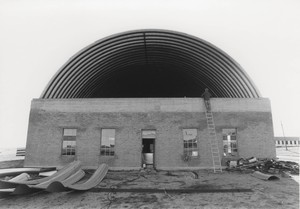
Julian Rose explores the question: what does it mean for an artist to make architecture? Delving into the archives of Donald Judd, he examines three architectural projects by the artist. Here, in the first installment of a two-part essay, he begins with an invitation in Bregenz, Austria, in the early 1990s, before turning to an earlier project, in Marfa, Texas, begun in 1979.
In this video, Gagosian director Serena Cattaneo Adorno celebrates the installation of Alexander Calder’s monumental sculpture Flying Dragon (1975) at Place Vendôme in Paris, detailing the process and importance of this ambitious project.
Art historian Eileen Costello and Yale School of Art professor Marta Kuzma discuss Donald Judd’s two-dimensional work and how the lessons he learned from the innovations of Abstract Expressionist and Color Field paintings permeate his entire body of work. Their conversation is moderated by Caitlin Murray, director of archives and programs at Judd Foundation.
Peter Ballantine, Donald Judd’s longtime fabricator of plywood works, and Martha Buskirk, professor of art history and criticism at Montserrat College of Art in Beverly, Massachusetts, discuss the development, production, and history of the largest plywood construction Judd ever made, an untitled work from 1980.
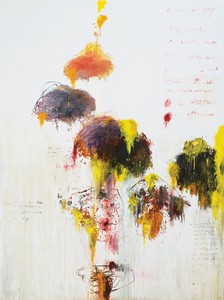
Thierry Greub tracks the literary references in Cy Twombly’s epic painting of 1994.
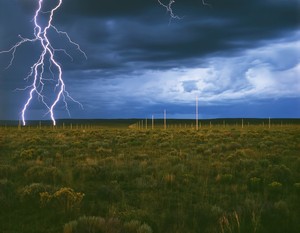
In this second installment of a two-part essay, John Elderfield resumes his investigation of Walter De Maria’s The Lightning Field (1977), focusing this time on how the hope to see lightning there has led to the work’s association with the Romantic conception of the sublime.
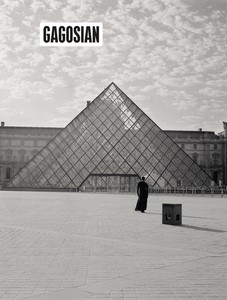
The Summer 2021 issue of Gagosian Quarterly is now available, featuring Carrie Mae Weems’s The Louvre (2006) on its cover.
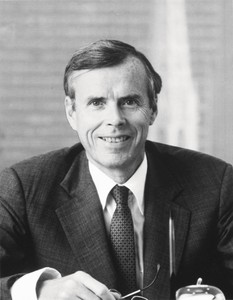
Jacoba Urist profiles the legendary collector.
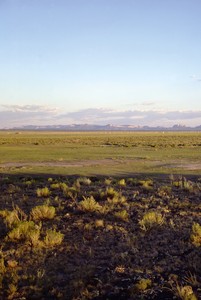
In the first of a two-part feature, John Elderfield recounts his experiences at The Lightning Field (1977), Walter De Maria’s legendary installation in New Mexico. Elderfield considers how this work requires our constantly finding and losing a sense of symmetry and order in shifting perceptions of space, scale, and distance, as the light changes throughout the day.